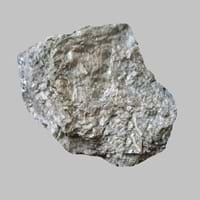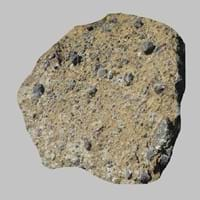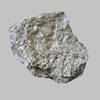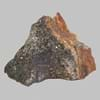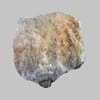Definition
Whiteschist is an uncommon rock type belonging to a class of metamorphic rock, this is formed at high-ultra-high pressures
Hyaloclastite is an aggregate of fine, glassy debris formed by the sudden contact of hot, coherent magma and cold water or water-saturated sediment
Discoverer
Unknown
Unknown
Etymology
From French schiste, Greek skhistos i.e. split
From hyalo + -ite
Class
Metamorphic Rocks
Igneous Rocks
Sub-Class
Durable Rock, Soft Rock
Durable Rock, Soft Rock
Group
Not Applicable
Volcanic
Other Categories
Fine Grained Rock, Medium Grained Rock, Opaque Rock
Fine Grained Rock, Opaque Rock
Texture
Foliated
Pyroclastic
Color
Colourless, Green, Grey, White
Brown, Grey, Yellow
Durability
Durable
Durable
Appearance
Banded and Foilated
Dull
Interior Uses
Decorative Aggregates, Interior Decoration
Countertops, Decorative Aggregates, Homes, Interior Decoration
Exterior Uses
Garden Decoration, Paving Stone
As Building Stone, As Facing Stone, Paving Stone, Garden Decoration, Office Buildings
Other Architectural Uses
Curbing
Curbing
Construction Industry
for Road Aggregate
Building houses or walls, Construction Aggregate
Medical Industry
Not Yet Used
Not Yet Used
Antiquity Uses
Artifacts, Monuments, Sculpture, Small Figurines
Artifacts, Jewellery, Monuments, Sculpture
Commercial Uses
Creating Artwork, Gemstone, Jewelry, Production of Lime
Cemetery Markers, Creating Artwork
Types
Not Available
Welded tuff, Rhyolitic tuff, Basaltic tuff, Trachyte tuff and Andesitic tuff.
Features
High percentage of mica, Host Rock for Lead
Always found as volcanic pipes over deep continental crust
Archaeological Significance
Famous Monuments
Data Not Available
Data Not Available
Famous Sculptures
Data Not Available
Data Not Available
Formation
Whiteschist is formed by dynamic metamorphism at high temperatures and pressures that aligns the grains of mica, hornblende and other elongated minerals into thin layers.
Hyaloclastite is a type of Igneous rock is formed through the cooling and solidification of lava or magma.
Mineral Content
Carbonate, Coesite, Quartz, Silica
Calcite, Chlorite
Compound Content
CaO, Mg, MgO, Silicon Dioxide
Hydrogen Sulfide, Sulfur Dioxide
Types of Metamorphism
Not Applicable
Burial Metamorphism, Cataclastic Metamorphism, Contact Metamorphism, Hydrothermal Metamorphism
Types of Weathering
Biological Weathering, Chemical Weathering, Mechanical Weathering
Biological Weathering, Chemical Weathering, Mechanical Weathering
Types of Erosion
Chemical Erosion, Coastal Erosion, Glacier Erosion
Chemical Erosion, Coastal Erosion
Grain Size
Fine to Medium Grained
Fine Grained
Fracture
Conchoidal
Not Available
Porosity
Less Porous
Highly Porous
Luster
Subvitreous to Dull
Dull and Grainy
Compressive Strength
Not Available
Cleavage
Perfect
Not Available
Toughness
1
Not Available
Specific Gravity
2.86
Not Available
Transparency
Opaque
Opaque
Density
2.8-2.9 g/cm3
Not Available
Specific Heat Capacity
Not Available
Resistance
Heat Resistant
Heat Resistant
Deposits in Eastern Continents
Asia
Afghanistan, Bangladesh, Bhutan, China, India, Japan, Kazakhstan, Malaysia, Pakistan, Russia, Thailand, Turkey, Vietnam
Russia
Africa
Egypt, Ethiopia, Morocco, Nigeria, South Africa
South Africa
Europe
Austria, England, France, Georgia, Germany, Italy, Liechtenstein, Monaco, Norway, Slovenia, Spain, Sweden, Switzerland
Iceland
Others
Not Yet Found
Not Yet Found
Deposits in Western Continents
North America
Canada, Costa Rica, Cuba, Mexico, Panama, USA
Canada, USA
South America
Brazil, Colombia, Guyana
Brazil, Colombia
Deposits in Oceania Continent
Australia
New South Wales, New Zealand, Queensland
Not Yet Found
